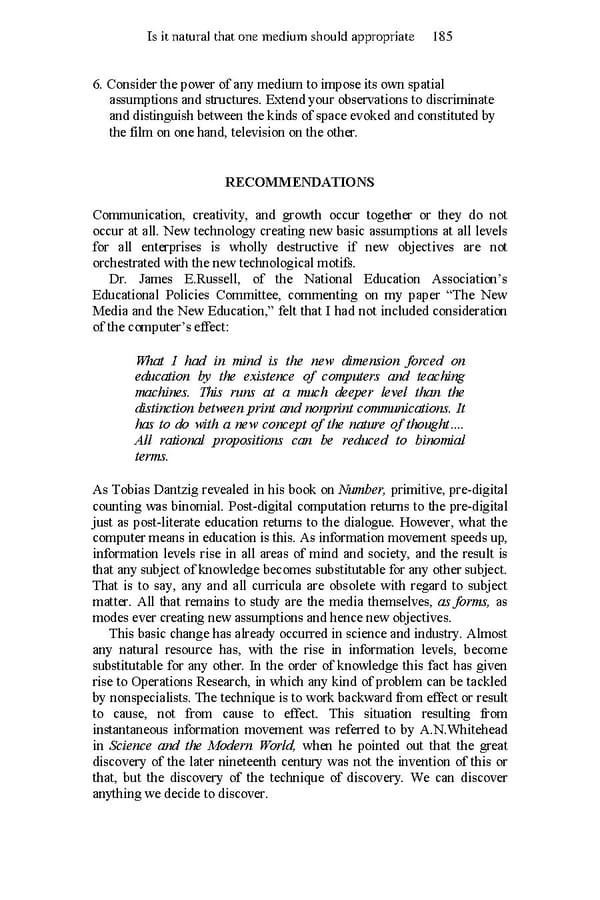Is it natural that one medium should appropriate 185 6. Consider the power of any medium to impose its own spatial assumptions and structures. Extend your observations to discriminate and distinguish between the kinds of space evoked and constituted by the film on one hand, television on the other. RECOMMENDATIONS Communication, creativity, and growth occur together or they do not occur at all. New technology creating new basic assumptions at all levels for all enterprises is wholly destructive if new objectives are not orchestrated with the new technological motifs. Dr. James E.Russell, of the National Education Association’s Educational Policies Committee, commenting on my paper “The New Media and the New Education,” felt that I had not included consideration of the computer’s effect: What I had in mind is the new dimension forced on education by the existence of computers and teaching machines. This runs at a much deeper level than the distinction between print and nonprint communications. It has to do with a new concept of the nature of thought…. All rational propositions can be reduced to binomial terms. As Tobias Dantzig revealed in his book on Number, primitive, pre-digital counting was binomial. Post-digital computation returns to the pre-digital just as post-literate education returns to the dialogue. However, what the computer means in education is this. As information movement speeds up, information levels rise in all areas of mind and society, and the result is that any subject of knowledge becomes substitutable for any other subject. That is to say, any and all curricula are obsolete with regard to subject matter. All that remains to study are the media themselves, as forms, as modes ever creating new assumptions and hence new objectives. This basic change has already occurred in science and industry. Almost any natural resource has, with the rise in information levels, become substitutable for any other. In the order of knowledge this fact has given rise to Operations Research, in which any kind of problem can be tackled by nonspecialists. The technique is to work backward from effect or result to cause, not from cause to effect. This situation resulting from instantaneous information movement was referred to by A.N.Whitehead in Science and the Modern World, when he pointed out that the great discovery of the later nineteenth century was not the invention of this or that, but the discovery of the technique of discovery. We can discover anything we decide to discover.
 Essential McLuhan Page 191 Page 193
Essential McLuhan Page 191 Page 193